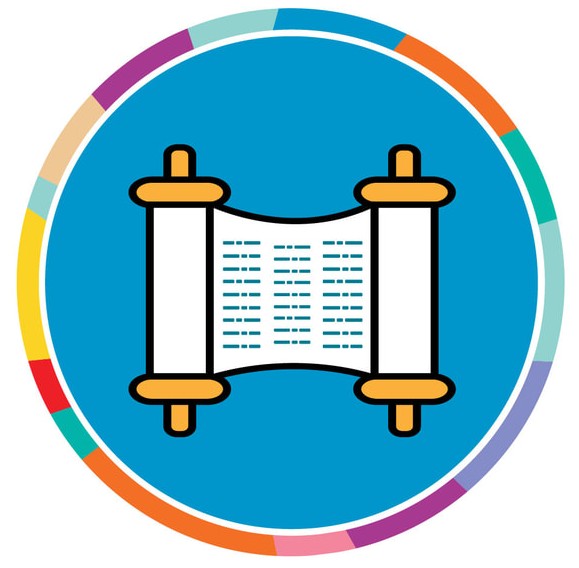Have you ever wondered WHY?
ANSWERS TO INTRIGUING QUESTIONs ABOUT JUDAISM
Why does the day begin at sundown on the Jewish calendar?

The custom of reckoning days in this fashion is based on the first chapter of the book of Genesis. At the end of each day of Creation in Genesis chapter 1, it reads: “And God saw that it was good. And it was evening, and it was morning…”. Additionally in the book of Leviticus (23:32) we read: “… from evening onto evening you shall keep the Sabbath.” Thus, each twenty-four-hour period begins at sundown. The Sabbath and Holidays, for example, begin at sundown, i.e. we begin celebrating Shabbat every Friday evening, which ends twenty four hours later at Saturday nightfall. (Sourced in part from The Jewish Book Of Why, Kolatch 1985, p. 292)
Why do some Jews sway when they pray?

Swaying, also known in Yiddish as Schuckling, is an ancient Jewish custom. The Zohar, a mystic work written by the second century C.E. Rabbi Shimon Bar Yohai, explains: “Rabbi Jose asks Rabbi Abba, why… Jews alone are in the habit of swaying the body when they study the Law? Rabbi Abba answered: It is proof of the refinement of their souls. “A person’s spirit is Adonai’s candle”, as referred to in Proverbs (20: 27). The light of that candle flickers and waves in harmony with the light of the Torah”. The fourteenth century German born sage, Rabbi Jacob Ben Asher (aka Baal HaTurim), explains that swaying while praying is an expression of awe, similar to the awe felt during the giving of the Torah at Mount Sinai.
Source: (Jewish Book of Why, Kolatch 1985, p. 151).
Why does the groom break a glass at the end of the wedding ceremony?

Why is the honor of witnessing up-close the reading of an open Torah-scroll named an “Aliya”?

Aliya is Hebrew for “ascent.” Originally, the prophet, priest or king would read the entire weekly Torah portion during synagogue worship. Later-on in history, the Torah reading was divided among members of the congregation. Since the reader would physically ascend a platform (Bimah) to recite the portion, as well as assume a role previously reserved for dignitaries, this honor was termed an “Aliya”, ascent. In later centuries it became evident that many Jews were not knowledgeable enough to musically read the Torah portion, thus a designated reader, the “Baal Koray”, master-of-reading, would do so, and the term Aliya would then refer to the honor of witnessing the reading up-close and reciting the blessing before and after the performance of this Mitzvah.
Source: (Second Jewish Book of Why, Kolatch 1985, p. 133).
Why is the wedding ceremony held under a Huppah?

A Huppah is a wedding canopy usually a large piece of decorated fabric (sometimes a Talit, a prayer shawl) supported by four firm poles. It is a reminder of ancient times when the groom brought the bride to a room in his house at the end of the betrothal (engagement) period to copulate for consummating the marriage. The sexual joining, termed Yihud, was considered the essence of the wedding. During Middle Ages when weddings were performed in the synagogue, it became customary to erect the type of Huppah still in use today, symbolizing the Yihud room. Source: (Second Jewish Book of Why, Kolatch 1985, p. 35).
Why do Jews observe the Sabbath as a day of rest?

Why are the Sabbath candles lit before sunset on Friday, and not on Saturday proper?

Why is the word “Amen” often said during public prayers?

Why are the number of candles increased every night rather than decreased?

Why do Jews eat Potato Latkes on Hanukkah?

Why is a Mezuzah placed on the doorpost of Jewish homes?

Why is a Jewish male child circumcised?

Why wear a Yarmulkah (Yiddish) or Kipah (Hebrew)?

Why is pork so objectionable to Jews, even more than other non-Kosher animals?

Why is Jewish identity traditionally passed from mother to child?

Why are some wines considered kosher and others not?

Why is the word L’Chayim used when raising a glass and making a toast?


